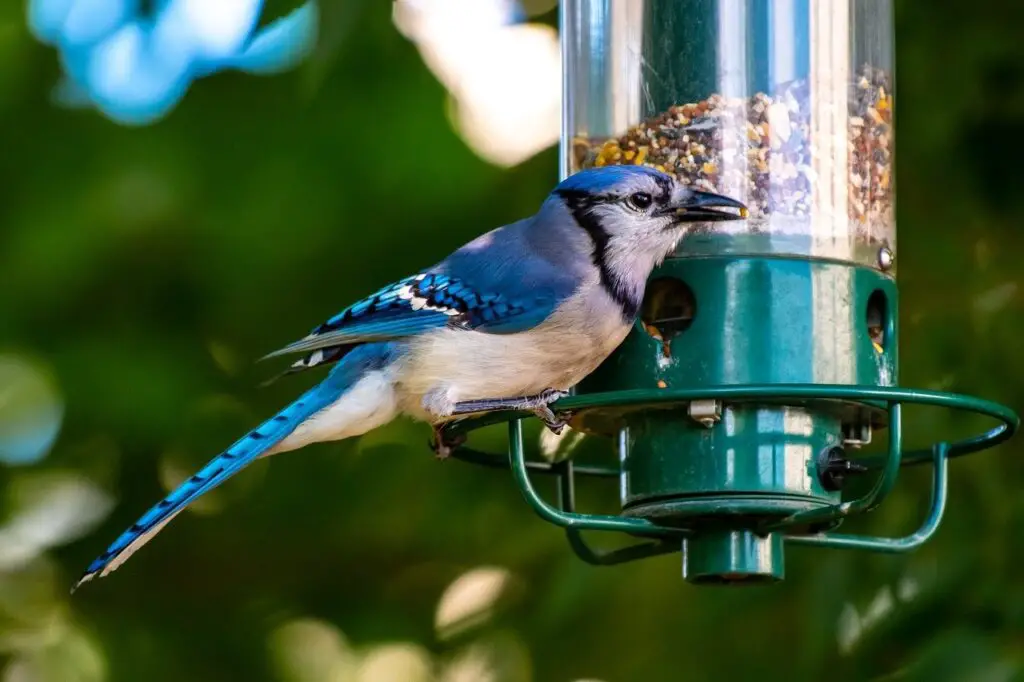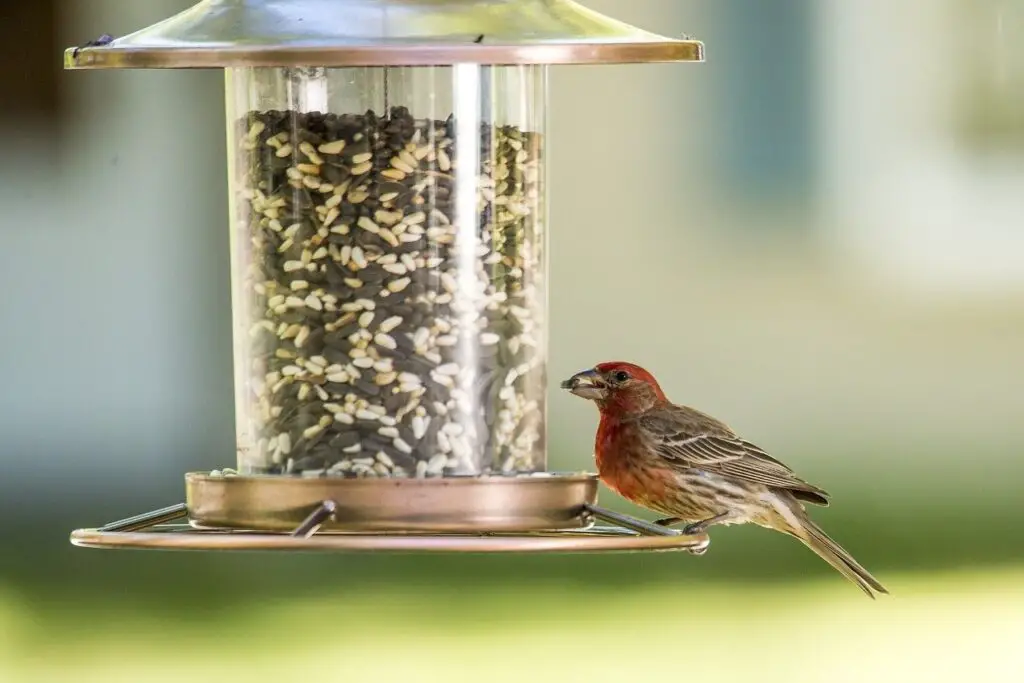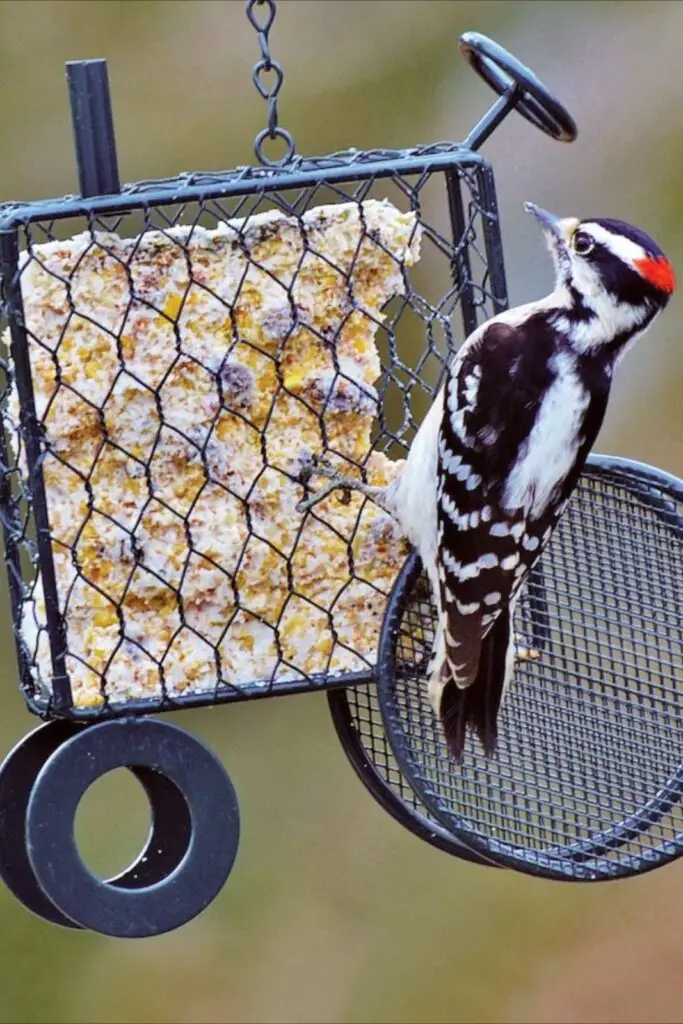The Best Bird Food to Attract Colorful Birds
All bird feeders want to attract as many colorful birds as possible. If you’re one of those bird feeders, you need to equip your backyard with the right elements, including shelter, food, and water.
Many bird species eat whatever you offer, but you need to cater to the taste buds of the most colorful birds if you want to attract them. Let’s discuss what food you can use to attract some of the most colorful and beautiful birds.
The Best Bird Seeds for Cardinals

Cardinals are one of the most beautiful bird species, and you need to fill your bird feeders with their favorite bird seeds. These little birds can eat different types of food, and they are not very picky.
Attracting Cardinals
They can eat suet, insects, and some fruits such as dark-colored berries, mulberry trees, and blueberry bushes. When it comes to seeds, cardinals love the following options:
- Unsalted and unsweetened peanuts (both roasted and unroasted)
- Safflower seeds
- Sunflower seeds
- Sunflower chips and hearts
- Striped sunflower
- Nyjer
- Black oil sunflower
You can also place some cracked corn in your bird feeders. If you have too many squirrels in your backyard, safflower is your best option because most squirrels avoid this seed. However, safflower will also attract other bird species, including titmice, chickadees, and woodpeckers.
Other Considerations to Attract Cardinals
Perhaps, the most important factor you need to consider is to provide an environment that allows cardinals to feel secure. The best way to achieve it is to offer natural shelter. You can plant bushes, trees, and shrubs in your lawn with nesting areas and a lot of hiding spots.
It’s also important to drop any of the seeds mentioned above on the ground near the bird feeder. It’ll allow cardinals to find the bird feeder.
You’ll also need to make sure you offer food that cardinals love throughout the year. That’s because these are non-migratory birds which means you can see them in your backyard in spring, winter, fall, and summer.
Cardinals will move to a more reliable food source if they find your bird feeders empty.
Related post: How to Identify American Robin Eggs
The Best Bird Food for Blue Jays

Blue jays are known as backyard birds. They have a bright blue color, distinctive behaviors, and lovely sound. Interestingly, blue jays belong to the Corvidae family, which means they’re closely related to ravens and crows.
They’re found throughout the eastern regions of North America. You can easily invite them to your backyard if you live on the eastern side of the Rocky Mountains.
Attracting Blue Jays
Attracting blue jays isn’t a difficult task. You only need to make sure that you offer the right food and a welcoming environment. These birds like to eat bird suet and some fruits, including blackberries and cherries.
By far, their most favorite food is peanuts, and you can also use acorns, sunflower seeds, cracked corn, and blacked oil sunflower to attract these birds. However, peanuts (that are still in the shell) will ensure that blue jays keep returning to your backyard.
Other Considerations to Attract Blue Jays
It’s important to note that blue jays can eat a lot of peanuts, and it can cost you a whole lot of money. Therefore, it’s advisable to use multiple food options that bird species eat.
You also don’t need to install birdhouses for these birds because they prefer to make their nests on mature trees such as hickory, oak, and beech.
If you have any of these trees on your lawn, consider offering some nesting materials like small twigs, sticks, and grass clipping, and blue jays will likely make their nests in your backyard.
Make bird baths fun with: The Best Water Wigglers for Bird Baths
The Best Bird Food for Bluebirds
Most bird feeders like to see bluebirds in their backyards. However, if you don’t use the right food, it’s nearly impossible to attract these colorful and beautiful birds.
Attracting Bluebirds
Bluebirds like to eat the types of food that they can easily find in their natural habitat. They can eat small insects, and you can add a range of foods to your bird feeder to attract these little feathered fellows. These food options include:
- Mealworms in all forms such as roasted, canned, dried, or live
- Diced or whole berries such as blackberries, raspberries, hackberries, pokeweed, dogwood, holly, and sumac
- Small pieces of fruits, including pears and apples
- Dried fruits in a softened form, including currants, cranberries, blueberries, and raisins
- Bird dough
- Peanut butter
- Chopped peanuts
- Bird suet in the form of shreds, nuggets, or chunks
- Small pieces of eggshells during the nesting season
- Sunflower small chips or hearts
- Vine and small tree fruits such as cherries and grapes
- Flying insects such as mosquitoes, termites, and moths
- Spiders, ants, beetles, crickets, grasshoppers, and other small insects
- Insect larvae, caterpillars, grubs, and snails
Other Considerations to Attract Bluebirds
As you can see, bluebirds can eat a wide variety of foods, especially insects. Therefore, you should minimize the use of pesticides and insecticides if you want to attract more bluebirds.
These birds will find these insects and will eat them, providing you with a natural pest control source.
It’s important to use open feeders to offer these foods to bluebirds to make them feel secure and comfortable. You can also use dishes and trays because this bird species don’t like to perch on short perches or narrow ledges.
However, you’ll also need to make sure that your bird feeders are located in sheltered and protected areas. If you want to use live mealworms, consider spreading them on your lawn or use containers with smooth sides. It’ll prevent worms from moving around and hiding before they’re eaten.
Last but not least, plant some fruit trees and berry bushes to ensure a bluebird-friendly landscape. It’ll set a welcoming environment and attract more bluebirds to your backyard.
The Best Bird Seed for Finches

In North America, there are many different species of finches. Purple finch, house finch, and goldfinch are some common types. However, the most favorite finch species among bird feeders is the bright yellow American goldfinch.
All finch species have beautiful and vibrant feathers, and they’re very entertaining to watch. You can easily attract them to your backyard by following the right food options.
Attracting Finches
Most species of finches love to eat different bird seed types. The best options to attract finches are:
- Sunflower seeds
- Nyjer seeds
Finches have small beaks, and both the above bird seeds are easy to eat. These seeds are also rich in oil and offer the nutrients the finches need. Your best bet to attract finches is to use the combination of socks and Nyjer seeds because most finch species prefer it.
Other Considerations to Attract Finches
If you want to make a finch-friendly environment in your outdoor area, consider plating as many seed-bearing plants as you can. Plants like marigold, milkweed, zinnias, poppies, cattails, cottonwood fluff, daisies, and cosmos are great options to attract finches.
Goldfinches are known as granivores, and they like to eat seeds from flower heads, grass, and dandelions. They’re also found eating leaves of some plants and even pine cones.
Finches are tidy birds, and they like to avoid dirty bird feeders with mildew or mold buildup. They also don’t eat clumpy seeds. Therefore, it’s important to keep your feeders clean and add a weather guard to keep them from getting clumpy and wet from the rain.
The Best Bird Food for Woodpeckers
Woodpeckers are year-round and non-migratory birds. They have white and black markings and do well in even bitterly cold and snowy climates. You can use the following menu to attract as many woodpeckers as possible.

Attracting Woodpeckers
Woodpeckers aren’t known to be picky birds. You can even use suet straight from the butcher to feed these birds. Yes, you read that right. You don’t even need to render suet.
You can use store-bought suet cakes or come up with your own recipe. That’s why most people use inexpensive suet to attract woodpeckers.
Woodpeckers also love to eat different types of nuts. However, peanuts are the most popular option that woodpeckers can gobble up. Just like any other bird, you must use unsalted and unsweetened peanuts to feed them.
Raw peanuts will also do the job, but some experts suggest that they can affect the digestive system of birds, including woodpeckers. You can use a regular bird feeder to offer suet and peanuts to these birds.
Probably the easiest way to attract woodpeckers is to use peanut butter. All you need to do is smear some peanut butter on the trunks of different trees.
When it comes to seeds, there is no better option than sunflower seeds to attract woodpeckers. They love this seed and can eat it throughout the year. Consider using a platform feeder or hopper for sunflower seed to offer easy access to woodpeckers.
Related post: Capture moments with your feathered visitors. Check out these bird feeders with cameras!
Other Considerations to Attract Woodpeckers
Use a log feeder, fill its hole with peanut butter or suet, and place it in your backyard. You can also use bird feeders that come with tail props. These feeder types are specially designed and will attract more foraging woodpeckers.
Inviting birds is surely a fun thing until bird seed weeds start to grow on your backyard. Here are tips on how to prevent bird seed weeds from occupying an area on your lawn.